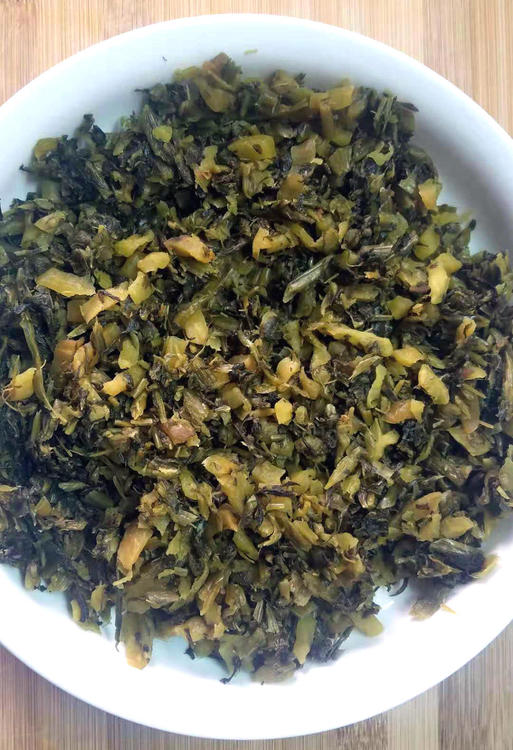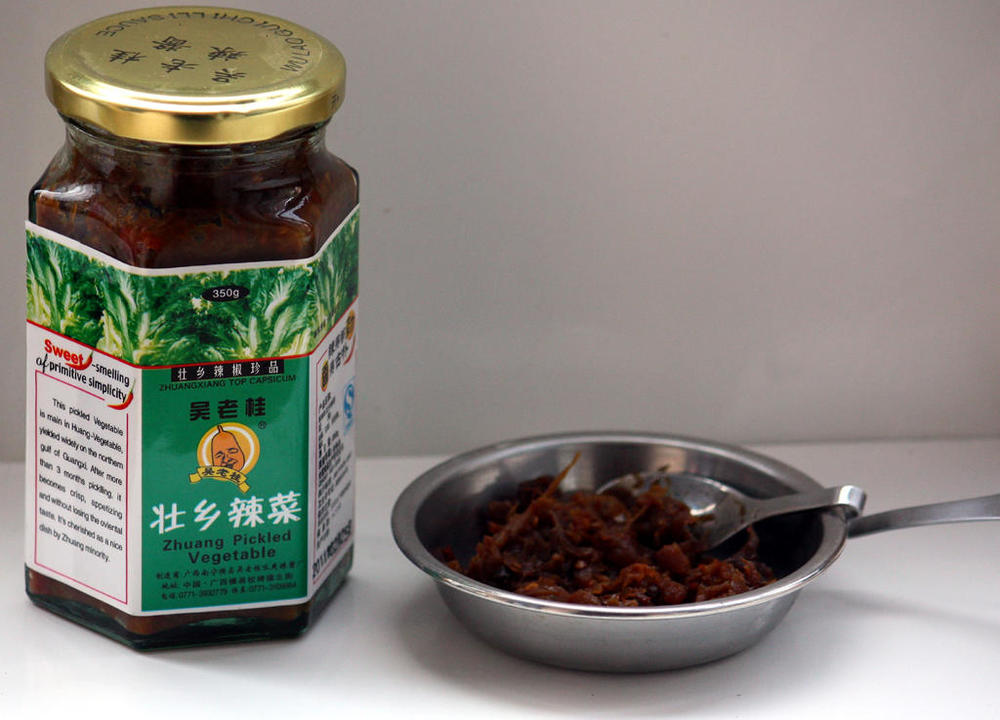Now I come to what is one of the top two favourite greens round here.
Brassica juncea
Mustard greens, leaf mustard, Chinese mustard, Indian mustard, Oriental mustard, vegetable mustard, gai choy. Take your pick.
Most commonly 芥菜 (Mand: jiè cài; Cant: gaai3 coi3) but also sometimes 大菜* (Mand: dà cài; Cant: daai6 coi3), 大芥 (Mand: dà jiè; Cant: daai6 gaai3) among others, in Chinese.
It is stir fried with garlic, chopped and mixed with pork for jiaozi and wonton fillings etc, used in hot pots and soups. A favourite soup round these parts is clam and leaf mustard soup - 车螺芥菜汤 (Mand: chē luó jiè cài tāng). So popular, in fact, that many supermarkets pre-pack their clams with the vegetable.
Leaf mustard, as the name suggests, has a strong, but not unpleasant flavour. Much of this pungency is lost with excessive cooking.
The tuber and stems of this mustard plant are also, often pickled. The best-known example is probably 榨菜 (Mand: zhà cài; Cant: zaa3 zoi3) from Sichuan. This is the salted tuber which is then steeped in chilli paste and allowed to ferment. Similar to kimchi, but spicier. It is used in several noodle dishes such as dan-dan noodles, and also as a condiment with rice.
Zhacai
Also common is 雪菜 (Mand: xuě cài; Cant: syut3 coi3) , literally 'snow vegetable'. This is salt fermented mustard greens. The leaves are chopped and salted with sea salt and left to pickle in the brine produced from the salt and the vegetable's own juices.
Locally, we have this pickled vegetable made by the Zhuang ethnic minority** which also uses the mustard plant.
* 大菜 (Mand: dà cài; Cant: daai6 coi3) is also the name for 'agar', the seaweed derived thickener.
** Minority in China; majority in Guangxi. They are the largest ethnic minority in China and most live here in Guangxi. Many of my friends here are Zhuang.







